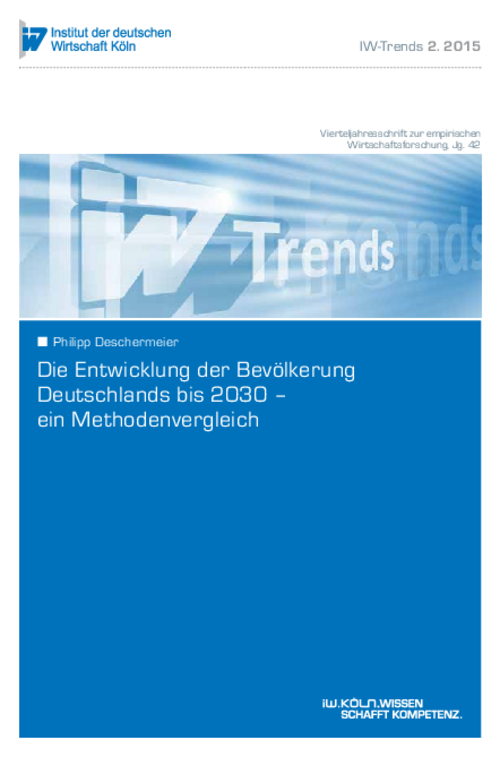A Comparison of Methods

Population Development in Germany to 2030
IW-Trends

A Comparison of Methods
The 13th Coordinated Population Projection is the most widely accepted source of information on the future development of Germany’s population. The assumption that there will be a sustained high level of net migration suggests that, on balance, the total population will have changed little by 2030. This makes the demographic challenges faced by German business seem less dramatic. Yet German society continues to age. Moreover, the scenario technique used by Germany’s official statisticians presents problems from a methodological point of view because no degrees of probability can be assigned to the scenarios. There is a danger that political and business decision-makers will choose to regard the scenario that suits them best as the most likely and act accordingly. This can have serious consequences. The paper discusses the benefits and the drawbacks of stochastic methods on the basis of a stochastic population forecast made by the Cologne Institute for Economic research.

Philipp Deschermeier: Die Entwicklung der Bevölkerung Deutschlands bis 2030 - Ein Methodenvergleich
IW-Trends

More on the topic

Possible Developments in the Supply of Skilled Workers up to the Year 2040
The German labor market is on the verge of a fundamental upheaval. While the number of people in the labor force has risen steadily in recent decades, it is likely to drop significantly as soon as the baby boomers retire.
IW
The Social Situation of Young People from Non-German-Speaking Families
An analysis of the microcensus shows that in 2017, around 2.4 million children and adolescents in Germany lived in non-German-speaking households. This corresponds to 17.7 per cent of all minors (under the age of eighteen) and 47.0 per cent of those with a ...
IW